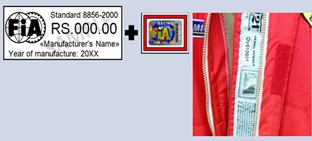Motor racing sees vehicles pushed to their limits. The best drivers are the ones who are able to walk along the ragged edge, maintaining control at the brink of a vehicles performance envelope.
This balancing act of control and chaos comes with the risks to match. Safety equipment is paramount in motorsport and thanks to massive technological advances, the risk of racing has been reduced substantially.
Crashes that would once have injured and killed drivers are now walked away from. Fernando Alonso’s crash in Melbourne during this years’ F1 race is a demonstration of the protection that drivers enjoy.
After the crash Alonso told the BBC that the safety equipment kept him alive.
“For the safety of those cars is why I am alive — and the safety wall. I think it was a racing thing and sometimes we forget we are going 300km an hour,” he said.
“I saw the sky, the ground, the sky, the ground. I wanted to get out quickly because my mum is watching at home.”
Unfortunately, fake versions and counterfeit safety equipment is readily available for sale, representing a major risk to motorsport competitors and spectators.
Fire proof race suits made from Nomex, a staple in the arsenal of items drivers use to protect themselves from the perils of the unexpected, have been found faked. Counterfeit race seats, safety harnesses, head restraints and even fire resistant underwear are on the market and difficult to distinguish from the genuine article.
Governing body of motorsport the Federation Internationale de l’Automobile (FIA) and The Confederation of Australian Motorsport (CAMS) are leading the fight against counterfeit motorsport safety equipment.
A labelling standard assists racers to identify equipment that has met the standards of the FIA.
The below is a guide to spotting a fake, located on the CAMS website, it can be reviewed further at http://www.cams.com.au/media/news/latest-news/buyer-beware-how-to-spot-a-fake
The standard includes labelling for:
- Race Seats
- Safety Harnesses
- Frontal Head Restraints
- FIA Standard Helmets – and the visor
- Safety Fuel Bladder
- Wheel Restraint Cables
- Drivers apparel including shoes, gloves, underwear and race suits.
The FIA control the distribution of these labels to the equipment manufacturers, who in turn must record the use of each label for reporting purposes back to FIA.
Safety Apparel Labelling


Each new race suit (or overall as is the FIA term) has this new label attached on the inner flap of the front zipper. This is in addition to the easily recognised label that is embroidered on the collar of the suit.
All other items of apparel are now also fitted with the hologram label, in a range of controlled locations. This label should be clearly visible and identified before you purchase an item, giving you peace of mind that the product is genuine and meets the standard designed to provide the highest level of protection in an incident.
Price too good to be true?
A key indicator of a fake is the price, it is often too good to be true. If you have any doubt our CAMS Technical Team can assist in determining the legitimacy of an item as complaint with the standards of the FIA. Email technical@cams.com.au or call the member hotline 1800 883 959.
Some examples:
Seat standard labelling:


Frontal Head Restraint:


Safety Fuel Bladder:


Wheel Restraint Cable:

